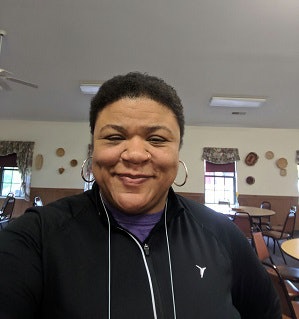Some might describe Ludacris’s (2001) song, “Move Bitch”as an anthem of fight, strength, and resistance. Others might describe the song as bold, vulgar, and direct. I use the title to describe a recent experience I had working in higher education that forced me to resign from my position and the institution that employed me.
Please indulge with me as I share the exact experience that sparks this op-ed. White supremacy has been a significant part of my life from the minute I was born. Up until age 40, I always wanted to fit in with society. Now I am confident in living from the outsider within status as Patricia Hill Collins describes.
I am a proud Black woman. I am a visionary. I live and speak my truth. I am a third-year doctoral student and student affairs practitioner with over 17 years of experience. I am a survivor, fiancee, sister, aunt, friend, athlete and life-long learner. I remember vividly the day these words were said to me; Donald Trump just won the 2018 U.S. Presidential Election. The vice president of student affairs, a White woman, told me, “You lead too much from a place of your race and gender. You should go work at an historically Black college or university [HBCU]”. I thought to myself, is this really happening? Why did you hire me? Today, I invite you to reflect on the title of “Move Bitch” and answer the following: How does white supremacy manifest itself through your institution’s hiring practices and daily institutional actions and policies? I refer you to Are You Supporting White Supremacy? to help you figure out your answer to this question.
 B. Nathan
B. NathanWhat is fit? What does fit look like? Who determines who fits in a position or an institution? White supremacy is the answer to those questions and the root of the problem. White supremacy is rooted in meritocracy. White supremacy enables and says whiteness is the standard. Meritocracy decides who is hired, who stays, and who fits in positions within higher education institutions. Meritocracy is rooted in the American Dream.
Assuming all higher education practitioners working at all 5300 colleges and universities in the United States believe white supremacy and meritocracy exists in their organizations, is problem number one. Problem number two lies in higher education institutions continuing to allow white supremacy to manifest in their policies and actions. I challenge higher education institutions to remove white supremacy beliefs within their hiring policies and practices by limiting the belief and practice of implicit bias. Imagine yourself as the search chair. Imagine yourself as a search committee member. Imagine yourself as the hiring manager. Do you have implicit bias when deciding who to bring for on-campus interviews? Do you have implicit bias when making the final decision as who to hire? The Kirwan Institute for the Study of Race and Ethnicity at Ohio State states, “implicit bias refers to the attitudes or stereotypes that affect our understanding, actions, and decisions in an unconscious manner”. Additionally, the Kirwan Institute shares, “implicit biases are pervasive, distinct mental constructs, do not necessarily align with our declared beliefs, favor our own ingroup, and are malleable”.
What can we do to lessen implicit bias in our hiring policies? 7 Practical Ways to Reduce Bias in your Hiring Process, provides a platform for three solutions I suggest be adopted by higher education. First, institutions should have ongoing and active trainings for all higher education professionals related to implicit bias. Trainings should occur no less than bi-weekly and be offered through Human Resources. Additionally, all search committee members and hiring authority members must report any implicit bias that arises during the process to a representative from Human Resources. When implicit bias shows up within the search process, all committee members including the hiring authority and search committee chair will have an open dialogue related to the causes and impact from implicit bias on the search. Second, before search committees gather to review materials, names, addresses, phone numbers, names of places candidates worked, and the name of schools’ candidates graduated from will be hidden. This blind review process can help eliminate assumptions and stereotypes such as, “this candidate worked at an Historically Black Colleges and Universities, they must not like white people, this candidate has only worked at small colleges, they have no understanding how large institutions functions”. Lastly, search committee members and hiring managers have a responsibility to be critical of how job descriptions are written. Do job descriptions use words that promote a certain gender stereotype or socio-economic class status? Do job descriptions use words that promote a culture of personal well-being or does status and promotion control the culture?
Owning and recognizing implicit bias is difficult and must be done. Earlier, I asked you to reflect on how white supremacy manifests in your hiring and daily policies and practices? Do you know the answer to that question? Additionally, what are you going to do to eliminate it? White supremacy, “Move Bitch” because this B is not going anywhere.
B. Nathan is a doctoral student at Colorado State University.





















